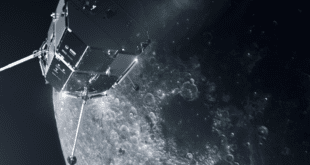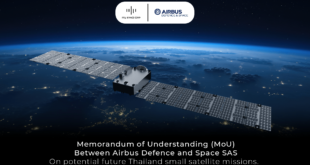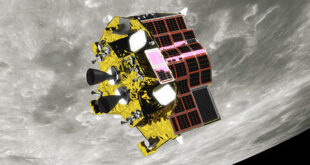by Blaine Curcio and Jean Deville
 As part of the partnership between SpaceWatch.Global and Orbital Gateway Consulting we have been granted permission to publish selected articles and texts. We are pleased to present “Dongfang Hour China Aerospace News Roundup 8 – 14 November 2021”.
As part of the partnership between SpaceWatch.Global and Orbital Gateway Consulting we have been granted permission to publish selected articles and texts. We are pleased to present “Dongfang Hour China Aerospace News Roundup 8 – 14 November 2021”.
Hello and welcome to another episode of the Dongfang Hour China Aero/Space News Roundup! A special shout-out to our friends at GoTaikonauts!, and at SpaceWatch.Global, both excellent sources of space industry news. In particular, we suggest checking out GoTaikonauts! long-form China reporting, as well as the Space Cafe series from SpaceWatch.Global. Without further ado, the news update from the week of 8 – 14 November 2021.
1) Shenzhou 13 completes first EVA, paves way for future mega-robotic arm
Jean’s Take
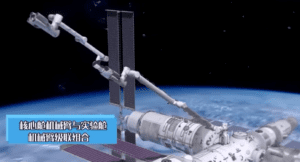 The Shenzhou 13 crew, composed of taikonauts Zhai Zhigang, Wang Yaping and Ye Guangfu, who have been on-board the Chinese Space Station since 15 October, performed its first EVA on November 7.
The Shenzhou 13 crew, composed of taikonauts Zhai Zhigang, Wang Yaping and Ye Guangfu, who have been on-board the Chinese Space Station since 15 October, performed its first EVA on November 7.
EVAs performed by the Chinese on the CSS are starting to become a routine, with 2 having been performed earlier this year by the previous Shenzhou-12 crew in just 3 months. But there are some interesting things to note with this 3rd EVA, so let’s dig into that.
First, there is some historical significance to this EVA. The two taikonauts that performed the space walk were Zhai Zhigang and Wang Yaping:
- Zhai Zhigang was the first Chinese to ever perform a spacewalk, back in 2008 as the commander of the Shenzhou-7 crew, and this was back then a historical moment. There was a sort of flashback moment with this new spacewalk, as when Zhai Zhigang stepped out, he said “我已出舱,感觉良好“ (I’ve exited the station, I feel fine); and this time Zhai said the exact same words, likely on purpose 🙂
- For the second taikonaut Wang Yaping, this was her first EVA, but perhaps more significantly, this was the first spacewalk to ever be performed by a female taikonaut, something that was regularly highlighted during the CCTV livestream.
The main objective of this EVA, which lasted 6.5 hours, was to install the systems to enable two robotic arms of the CSS to work together. Some brief background on this:
The Chinese Space Station’s core module, the Tianhe-1, has a 10m long robotic arm that we’ve mentioned before on the Dongfang Hour. It is extremely useful to help taikonauts during EVAs, move heavy equipment around, monitor the outside of the space station (with the cameras embarked on the arm), and help spacecraft or space station modules move from one place to another.
A second robotic arm will be sent with the Wentian experimental module, which will dock with the Tianhe-1 next year. This robotic arm is shorter, around 4-5m long. Both robotic arms can operate separately, but they can also be combined into one single mega 15m long arm. But to enable this, two addition systems are necessary, and it is what was being installed by Zhai Zhigang and Wang Yaping:
- Both robotic arms cannot interconnect directly. There needs to be an adapter (转接件) between the two.
- As both robotic arms can operate separately, the adapter will not always be used. This is why a suspension system (悬挂装置) was installed permanently on the small cylindrical module of the space station by the Shenzhou 13 crew during the EVA. When the adapter is not being used, it would be installed on the suspension system, which is a powered system.
So overall, that was the Shenzhou 13 crew’s first EVA, in their first month. The crew will be on-board for another 5 months, representing a total of 6 months, which is the routine length also for astronauts on the ISS. Among their remaining tasks will be 1) to use the robotic arm to move TZ-2 from the front docking port of the multidocking node to one of the side docking ports, 2) controlling the robotic arm remotely, 3) 1-2 more EVAs, 4) space sciences experiments, 5) the apparently long awaited second live science classes taught by Wang Yaping from the space station.
So Blaine, so cool stuff with the Chinese space station this week. But let’s not forget the launchpad which is instrumental in sending the space station modules into orbit. Do you want to tell us about the latest updates on the Wenchang launch center?
2) Multiple Announcements from iSpace
Blaine’s Take
It was a big week for Chinese commercial launch startup iSpace. First, the company signed an agreement with the Wenchang International Space City (文昌国际航天城) on Monday, which includes the establishment of a wholly-owned iSpace subsidiary in Wenchang. The deal calls for iSpace and Wenchang to work together to develop and promote medium-large scale reusable rockets being launched from Wenchang.
Several significant points to unpack from this story:
First, a short review. Wenchang is a city on the eastern coast of Hainan Island. The city is noteworthy for being home to the Wenchang Space Launch Site (文昌航天发射场), which is the newest and southernmost of China’s 4 launch centers. Wenchang’s southerly location makes it better-suited for heavier, often GTO launches, and up to now, the launch site has been home to the Long March-5 (China’s largest rocket), Long March-7 (GTO workhorse), and Long March-8.
To now, this has meant relatively few launches at Wenchang, with the site having seen less than a dozen launches since its opening in 2016. While China’s launch cadence for rockets such as the LM-5 and LM-7 is ramping up, we are still unlikely to see Wenchang achieve a high utilization rate from just these rockets. This brings us to the iSpace agreement.
iSpace is one of China’s leading commercial launch companies, with ambitions for medium-large reusable rockets, and with a track record of delivering on ambitions. The company was the first Chinese commercial launch company to put a rocket into orbit when its Hyperbola-1 launched successfully in July 2019, and while the company has failed in its 2nd and 3rd Hyperbola-1 attempts–both occurring in 2021–they have continued to make progress on the Hyperbola-2, a larger, liquid-powered rocket. The agreement calls for iSpace to develop medium-large reusable rockets to be launched from Wenchang, with potential for reusability by landing on a sea platform. Notably, this marks a change from as recently as last year’s CCAF, when iSpace showed a video of their Hyperbola-2 rocket first stage landing on land.
As discussed on previous episodes of the Dongfang Hour, Hainan Province is a Free Trade Zone (FTZ), which provides incentives for international trade. This may provide benefits for non-Chinese companies wanting to launch on Chinese rockets (iSpace or otherwise) from Wenchang. Notably, the Wenchang International Space City is designated as one of 11 “key parks” (重点园区, and park like a sort of industrial or innovation park, not a public park) of the Hainan FTZ, giving it added government support. As also discussed on previous episodes, Hainan is home to some of the world’s most outstanding coconut milk, and a hell of a dim sum restaurant (though admittedly that is not in Wenchang, but rather the provincial capital of Haikou).
It should also be noted that some of the incentives for the FTZ are related to local production and local manufacturing value-add. That being the case, the beginning of a cluster in the area may lead to a virtuous cycle, whereby more manufacturing is done in Wenchang, with limited taxes making the costs more competitive, which then brings more space-industry manufacturing to Wenchang. Still very unclear whether this will happen, and if it does, it would be in the medium-long term, but nonetheless, as we have seen over these couple of years, provincial-level space clusters are becoming increasingly important, and Wenchang/Hainan will be no exception.
Separately, this week iSpace also announced the conclusion of their investigation into the 3 August 2021 failure of their Hyperbola-1 rocket. The investigation was apparently quite thorough, taking more than 100 days and involving investigations on more than 40 individual events during the launch, 10 verification tests, and 2 fairing separation tests (ultimately the launch failed due to failure of fairing to separate). The ultimate cause of the failure was apparently a silicone rubber piece that got stuck, preventing the fairing from separating.
3) China’s Tianwen-1 orbiter performs braking maneuver and enters final remote sensing phase
Jean’s Take
China’s Tianwen-1 orbiter has been serving as a relay satellite for the Zhurong rover ever since the Zhurong lander and rover detached from the orbiter to perform a landing on Mars on May 15. Since then, the rover has traveled 1253m (as of November 8 2021) over a period of 174 sols (aka Martian days).
On November 8, the orbiter completed some orbital maneuvers, firing up its 4x120N during 260 seconds to change its orbit to a new one that would be much more favorable to space sciences.
Let’s explain this a little bit. Prior to last Monday’s maneuvers, the Tianwen-1 orbiter was in a so-called 265×15000 km “data relay orbit” with a period of 8.2 hours. Relaying data back to the Earth was the dominant mission, and so the orbit was naturally optimized for that. What this means was that the periapsis of the orbit ( → point in an orbit where a spacecraft is the closest to the planet) was always over Zhurong, enabling optimal communications between the rover and the orbiter.
But of course, not ideal for space sciences because the point where you’re closest to Mars (which is the point of highest resolution for any imaging equipment), you’re always over the same Mars area. So while most of Tianwen-1’s instruments were operational, their max resolution images were always over the same patch of land.
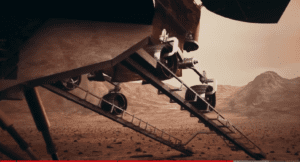 With the new orbit, it’s no longer the case. The orbiter now has a closer apoapsis (at 10700 km instead of 15000 km), a similar periapsis of 265 km, and an inclination of ~87°. The new orbit has also a shorter period of 7.08 hours.
With the new orbit, it’s no longer the case. The orbiter now has a closer apoapsis (at 10700 km instead of 15000 km), a similar periapsis of 265 km, and an inclination of ~87°. The new orbit has also a shorter period of 7.08 hours.
So in terms of maximum resolution, not that much of a change. However, the periapsis is now drifting between the North and South poles with every orbit, meaning that it will be able to image the entire Martian surface over a period of ~200 days ( → 06/2022).
The Tianwen-1 orbiter has a total of 7 instruments: you have 2 particule analyzers, 2 cameras (1 medium and 1 high res), a magnetometer (to map the Martian magnetic field), a mineralogical spectrometer (to investigate the mineral composition of the surface of Mars), and finally the Mars Subsurface Radar instrument (次表层雷达) to detect and map the presence of surface and especially subsurface ice.
It seems that 6 out of the 7 instruments were already operational in the data relay phase, so all instruments except the Mars subsurface radar. According to an interview of the deputy chief designer of the Tianwen-1 orbiter Zhu Xinbo (8th Academy), as Tianwen-1 enters the remote sensing orbit, it will (or probably already has) deployed the 4 antennas that compose the subsurface radar.
Other great source of China’s Mars mission + visuals here
This has been another episode of the Dongfang Hour China Space News Roundup. If you’ve made it this far, we thank you for your kind attention, and look forward to seeing you next time! Until then, don’t forget to follow us on YouTube, Twitter, or LinkedIn, or your local podcast source.
Blaine Curcio has spent the past 10 years at the intersection of China and the space sector. Blaine has spent most of the past decade in China, including Hong Kong, Shenzhen, and Beijing, working as a consultant and analyst covering the space/satcom sector for companies including Euroconsult and Orbital Gateway Consulting. When not talking about China space, Blaine can be found reading about economics/finance, exploring cities, and taking photos.
Jean Deville is a graduate from ISAE, where he studied aerospace engineering and specialized in fluid dynamics. A long-time aerospace enthusiast and China watcher, Jean was previously based in Toulouse and Shenzhen, and is currently working in the aviation industry between Paris and Shanghai. He also writes on a regular basis in the China Aerospace Blog. Hobbies include hiking, astrophotography, plane spotting, as well as a soft spot for Hakka food and (some) Ningxia wines.
 SpaceWatch.Global An independent perspective on space
SpaceWatch.Global An independent perspective on space

